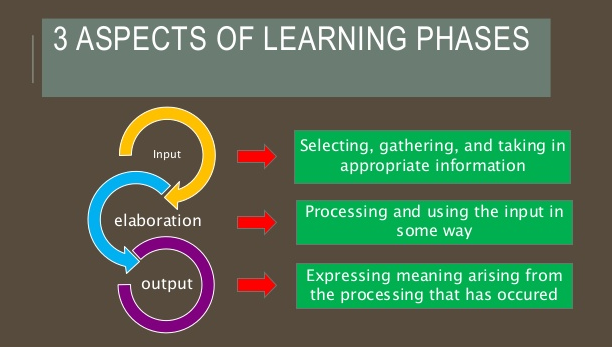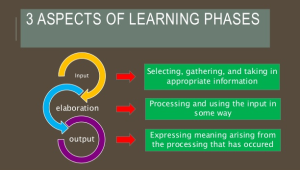One of this week’s main task was to read Tomasz P. Synlaski’s article on Inputs and Outputs
Here are my thoughts on some of the comments Szynlaski makes about Input and Output and why we need it:
- Szynlaski says that foreign language is best taught without analyzing grammar principles. I disagree. Grammar is a fundamental part of language learning. A balanced mix of (gradually complex) vocabulary and grammar rules is a sound basis for learning a language. Analysis leads to a deeper understanding, which, in the case of language learning, then leads to effective or “correct” communication.
- Szynlaski says that output (speaking and writing) is less important than input (listening and reading). I think that all four language skills are co-dependent. Thus, all skills are as important as each other. We can make our students’ outputs effective, instead of damaging, as the author indicates, by exposing them to “real” language. That is to say, by exposing them to native speakers communicating in natural circumstances. For example, the medium of newspaper articles, songs, video interviews etc. Indeed, I think the best way to express yourself effectively in a language is by mimicking native speakers communicating in their natural environment.
- In my experience learning a language, teacher feedback has played a crucial role in understanding a principle. The teacher “models” and the student “mimics” or copies, or repeats the vocabulary or grammar point as it is explained. The teacher is, at one time, the assimilator of information and, concurrently, the barometer of correctness. The conclusion being that, the teacher, online or offline, must use the equipment and tools at his or her disposable in the most efficient manner in order to facilitate language learning.
Reflections on Authentic Content in my Classroom
My school provides set texts books which come with accompanying CDs, VCDs and CD-Rom’s. The content is authentic, spoken by native speakers, and usually incorporates simple conversations in typical settings However, most of our textbooks, and therefore CDs, are quite old – think the 90s! Apart from that, I have started to ask my students to take pictures with their phones or cameras of things related to the topic we are studying. For example, one group is learning about Electricity. This is not exactly online learning, but in a country where most classrooms still only have a blackboard and chalk, this is a good step forward in the right direction. Finally, when possible, I source authentic, fun, and up-to-date material from websites such as:
http://tefltunes.com/Default.aspx
http://www.songsforteaching.com/esleflesol.htm
http://www.esl-galaxy.com/music.htm


